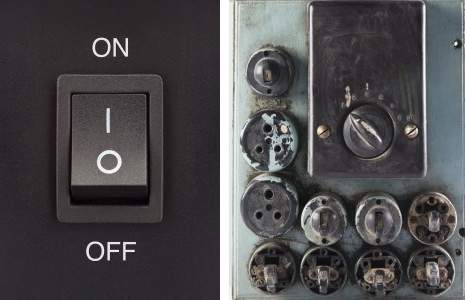Individuals draw bits of knowledge from their everyday experience with systems and services. They associate impressions about how things work and form their mental models. When user behaviors depend on people’s learnings about a specific sequence of activities or performing certain tasks, their mental model guides their understanding of how a framework functions.
Envision yourself buying an item through an online-shopping portal. What are you imagining? The picture you paint in your mind—or your established thought pattern—is your mental model. If your mental model matches the way a user interface actually functions, you might say that interface is intuitive. One might say, “The users get it before they’ve even seen the application.”
With regard to online experiences, users expect a specific sequence of events in light of both past encounters and their desire around what the experience should be. A classic case of such a pattern is the sign-up use case for a Web site, in which users must enter the required data, receive an activation link via email, then must click the link to activate their user account. Most users expect an online registration process along these lines and hold a mental model of what a sign-up procedure ought to be.
As stated by Kenneth Craik, some characteristics of mental models are that they are incomplete in nature and constantly evolve. While mental models are never a completely accurate representation of a thing, they provide simple representations of complex phenomena.
How People Form Mental Models
People form mental models through observation, immersive experience, and culture.
Observation
Observation is a crucial method of getting answers concerning people’s responses to their general surroundings. As individuals, we are well equipped to pick up detailed data about our environs through our senses.
Observation is a great way to learn things. When observing, the details we gather through our senses help us to identify similarities in our general surroundings. This further shapes our mental models. We begin seeing things in a way that upholds the rationale we’ve framed independently from anyone else.
Infants learn from others by observing how they do things and try to copy what they do. Youngsters watch their parents and others, then mirror their activities. As they grow, they learn that making a clamor can get them the attention they need. That early mental model becomes more sophisticated as they mature.
A series of things that we perceive shapes our mental models. If we keep observing an object over time, we may notice variations. Every time we attempt to make an inference, different outcomes might shift in importance. We can break down a mental model to build another one.
Consider a light switch: A mental model might be that when one flips a switch down, it turns on the light. But in the US, it works the opposite way. Figure 1 shows a couple of examples. When absorbing this data, our cerebrum would likely add this deviation into our overall conviction framework. As Don Norman has stated, users update their mental models based on stimuli from outside.

Immersive Experience
An immersive experience is one in which a user is totally caught up in a system. If the experience is a positive one, the user’s satisfaction may reach new heights. Immersive experiences stimulate our senses. For example, audiences sometimes cry while watching an intensely emotional scene in a movie or a TV show.
Having an immersive experience does not on its own let users form a mental model—though it may give them a higher level of fulfillment than those they’ve had before. However, when users compare and contrast that experience with a set of past experiences, they begin to visualize what an experience ought to be—to create a mental model. Once users have formed a mental model, they will often reject an experience that does not accord with that model.
Let’s again consider the movie experience. What makes watching films in a theater such an exciting proposition is a blend of sound, high-resolution imagery on a huge screen, the dimness of the room, a bin of popcorn, reclining seats—all of which create an ambiance that we do not feel anywhere else. At such moments, our physical self-awareness is altered, and we experience a world that exists only in our mind. Once the movie ends, we briefly feel disconnected from reality. The film evoked emotions, while our physical state remained unchanged. This impression lasts for some time.
In the past, when motion-picture theaters did not have Dolby surround-sound systems, people still appreciated the experience of watching films in theaters. But, now in 2016, we can’t imagine a theater’s not having a Dolby system. Our mental model of a theater experience has changed, so we have certain expectations.
It’s difficult to shape users’ mental model for an online experience because they’re constantly experiencing evolving patterns and norms. In an effort to offer users a more pleasurable experience, companies continually alter their Web experience by adding elements they hope will energize their audience. These changes drives users’ expectations to ever greater heights.
Culture
Culture plays a vital role in shaping human perceptions. Because people belonging to different cultures often have different mental models, the internationalization and localization of Web experiences that must address these cultural intricacies has always been challenging for designers. Creating a localized Web site presents design challenges that go far beyond translation.
Cross-cultural users face certain barriers in accessing information and are often confronted with problems with language barriers, social etiquette, keyboard usage, recognition of symbols and icons, currency and date formats, units of measure, and even legal requirements. For example, in the US, temperature is displayed in Fahrenheit; in India, in Centigrade. Dates follow a Month DD, YYYY format in the US. Plus, all public-facing Web sites must follow WCAG 2.0 guidelines.
Cross-cultural design aims to ensure products are easy to use and provide good user experiences across cultural boundaries. When designing a cross-cultural experience, it’s important to consider such key aspects of design as content organization, navigation design, color scheme, typography; and the design of visual information such as images, logos, photographs, and animations.
